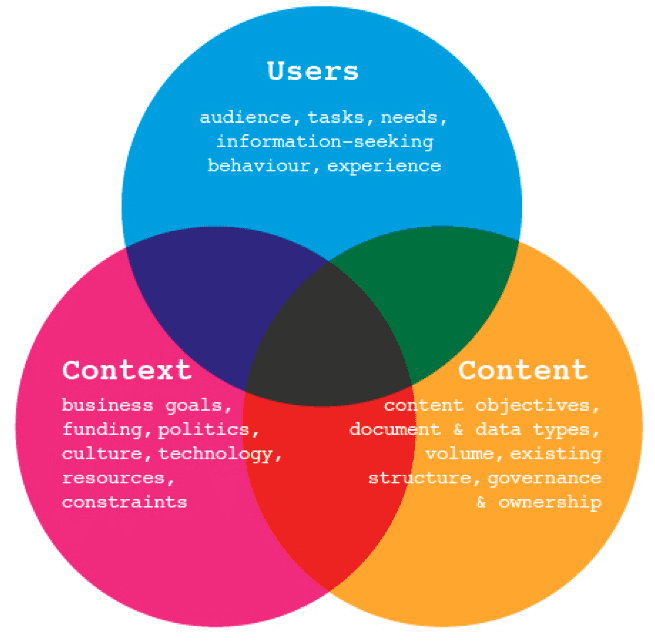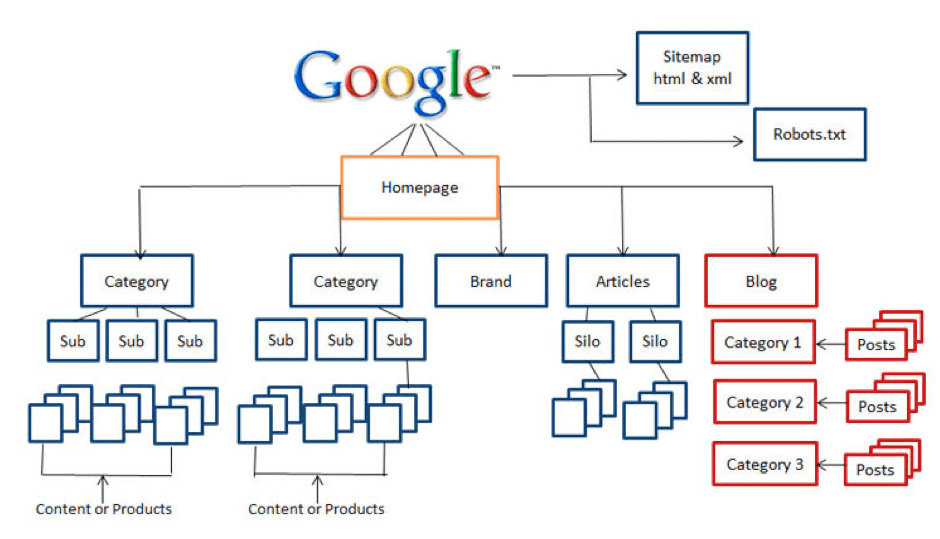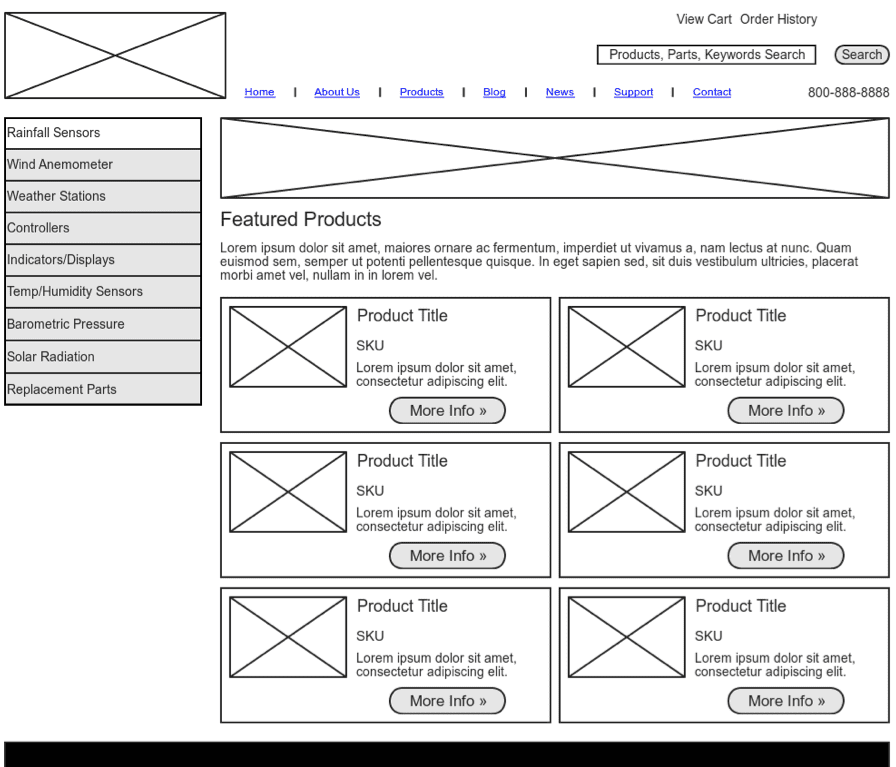You won't be able to design a great site without a good understanding of information architecture
The way in which a website is structured is a hugely important factor in determining how people find, understand and engage with content. In the absence of a sound structure, problems related to usability, content management and multiple re-designs can cause problems for both users and webmasters alike.
The process of planning and defining a website’s structure is known as information architecture (or IA for short) and it’s a practice that’s most often associated with user experience. However, an understanding of website structure and how different content elements relate to one another means that IA impacts digital marketing at a wider level and is therefore something many of us can use when strategising and planning.
Defining information architecture
The Information Architecture Institute offers the following definition:
“Information architecture is about helping people understand their surroundings and find what they’re looking for, in the real world as well as online”
IA is essentially about organising, structuring and labelling content in a way that enables users to find the information they need to complete a task. If we think about our experience when we visit a supermarket, for example, products are grouped based on what’s logical for customers. It’s interesting to note that although tomatoes are a fruit, they’re often grouped within the veg rather than fruit section because that’s where customers expect to see them.
One of the leading pioneers of information architecture is Peter Morville, who along with Louis Rosenfeld in their book Information Architecture for the World Wide Web (affectionately known as the ‘Polar Bear Book’) outlined the main components of IA:
- Organisation schemes and structures - how information is structured and categorised
- Labelling systems - how information is represented and defined
- Navigation systems - how users browse and navigate through information
- Search systems - how users look for and find information
As part of an ‘information ecology’, users, content and context work interdependently, with IA sitting at the intersection of these three areas:

Source: Peter Morville and Louis Rosenfeld, 2006
Through evidence gathering, IA allows us to organise content and design user flows based on the target audience and the technology and data related to the website. Research, which may include competitor analysis, card sorting or usability testing, sits at the heart of IA and informs actions and decisions.
The opportunity for digital marketers
The process of information architecture allows us as digital marketers to take a step back and consider how all the different pieces fit together as part of a bigger picture. We’re often so focused on our specific areas and disciplines that we take a siloed rather than holistic approach to how we build and structure websites.
Information architecture gives us the opportunity to consider cross-channel experiences. Digital display, social media and search means that there are now numerous ‘front doors’ to a website. Users rarely enter a website through the homepage and navigate using pre-defined journeys. As a result, we must map the customer journey across multiple touch points and design sitemaps, wireframes and taxonomies to meet user needs.
IA therefore works across and complements many aspects of digital marketing and provides us with an opportunity to enhance how we currently work. As an example, check out this excellent overview of from Rand Fishkin of Moz who explains how information architecture and SEO can – and should – work together.
The key tasks of Information Architecture
The key tasks and deliverables associated with information architecture are not the domain only of UX or IA professionals. Digital marketers working across many different disciplines can benefit from practising IA. For example, when an SEO looks at how products on a search page should be ordered, he is practising information architecture. Likewise, when a content strategist groups and categorises content, she is also practicing information architecture.
Some of the IA tasks that can add value to the work of any digital marketer include:
User research and analysis
Information architecture involves putting the user at the centre of the design process (an attribute of a user centred design (UCD) framework) to ensure that their backgrounds and goals are considered as early in the process as possible. As such, user research involves gathering data about user behaviours, needs and motivations to understand how people use information and applications.
User research is typically conducted using a number of different techniques and analysis, all of which provide insight to inform further IA enhancements:
Card sorting
Card sorting is a user-centred technique that enables you to label content elements onto cards from which users can then group and organise based on the site structure that makes sense to them.
There are two types of card sorting techniques - open (users organise topics based on categories that make sense to them) and closed (users organise topics based on pre-defined categories).
Interviews and discussions
Interviews can be conducted formally or as a casual discussion to go into more detail about someone’s attitudes, beliefs and experiences to really understand the users visiting your site.
Interviews should take place early on in the website creation phase so that users research can be incorporated into the objectives and goals for the site.
Focus groups
A focus group, which is a moderated discussion between 5 and 10 participants, typically enables users to talk through how they use a website and explain their motivations and attitudes.
The benefits of a group discussion is that ideas can bounce off one another and patterns can emerge of what users expect from the information they encounter on a website.
Surveys
Surveys are typically conducted online and include a series of questions aimed at the target audience of a site.
Online surveys enable you to collect data at scale at very little cost from which you can gather insights into who your users are, what they want to accomplish and the information they’re looking for on a website.
Task analysis
Task analysis enables you to learn about users’ goals and expectations by observing them in action.
The benefit of task analysis is that you can identify the information your site must support to help users achieve their goals, where road block are hindering journeys and where you can refine or redefine a site's navigation and search functionality.
Use cases
A use case is a written description of how users interact and perform tasks on a website. The goal is to outline how a system’s behaviour will respond to a particular request from a user’s point of view.
Use cases are particularly useful because they define who is using the website, what the user wants to do, the user’s goal, the steps they take to accomplish a task and how the website should respond.
Navigation and hierarchy
A website’s navigation and hierarchy is related to how information should be displayed and accessed. The user research process will help inform how different pages and content should be connected with one another and how they should be organised to enable users to get to the information they need.
This process will be a balance between what the user expects to see and how the organisation wants to group information. The output of this process will influence how the structure for the rest of the site will be created.

Source
Nomenclature/ labelling
The labelling or nomenclature of a website refers to how different sections and pages are named. This activity can fall under the remit of many different disciplines, including design, content strategy and SEO. What a page or section is called will inform how the website’s navigation and hierarchy is titled and how users will find information across the site.
Wireframing
Wireframing is the blueprinting of digital design. It’s a primary way of defining the information hierarchy of a web page and the connections between different screens and content elements.
Wireframing allows you to plan the layout of a page and define how users should process information. Like an architectural blueprint, it outlines the structure of a page visually and illustrates where information and content must go.

Source
Taxonomies and metadata
Taxonomies are about how information is grouped, categorised and organised. Metadata is about how the information is described to ensure content can be found and understood.
As with all the IA tasks, user research will play a leading role as it’s important that everything makes sense from the user’s perspective. Choosing the right taxonomy will underpin the structure of the site, whilst the metadata will ensure that users can navigate and search intuitively for what they need.
Summary
During the creation of a new website or the evolution of an existing one, the effective structure and organisation of information across the site is essential.
Crafting content and structure with the user in mind should be a primary consideration although it’s surprising how often this isn’t the case. Many websites are built around an organisation's corporate objectives as opposed to the users’. Information architecture is about putting the user at the heart of the design process to ensure that the site is being built for them.
Whilst IA is often seen as a user experience task, it’s something that all digital marketers should be aware of and practice. For example, a good website structure that intuitively works for users is much more likely to be valued by Google. And an understanding of user research and analysis can help content marketers to use the right terminology during content brainstorming sessions and host content across the site where it makes most sense to users.









